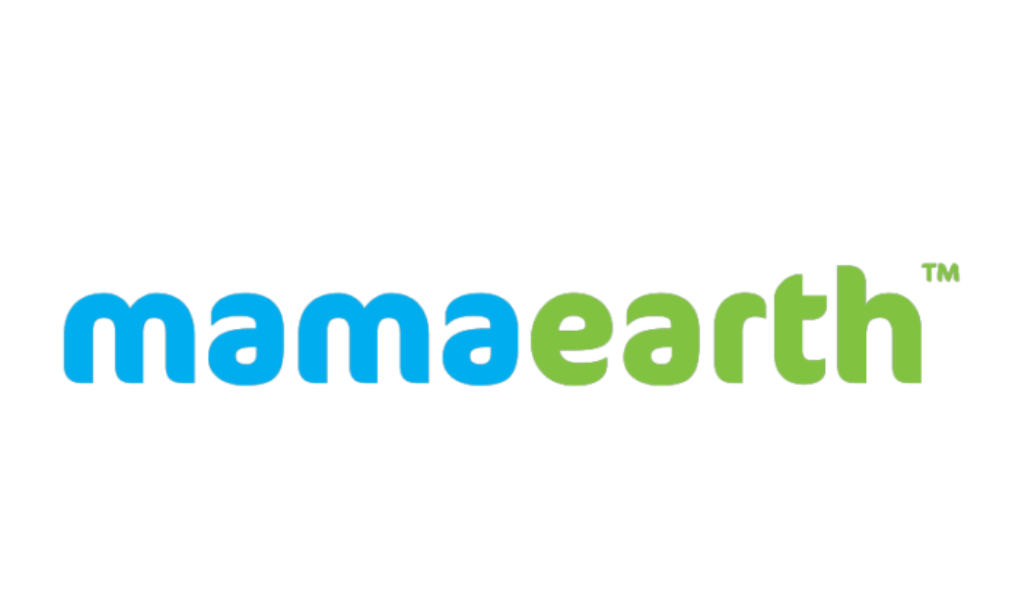
Key Takeaways:
- Direct to Customer helps the brands build end-to-end relationships with the customer because brands have control over the end-to-end process of delivery of goods in this business model
- In the D2C business model brand makes or change their brand story according to the target audience; this helps the brands to have the flexibility to make an impression as the brand wants.
- The freedom to connect directly with the customer in the D2C can communicate its brand story and build a clear brand identity.
- So here, D2C helps the brand to sell the product at the selling price- MRP and save earn a good amount of profit by eliminating the margins by the intermediaries.
While buying spectacles, we go and check many retail stores. We can also see the Lenskart Store and their application, but have you ever thought Lenskart is not intermediatory between the Seller and Buyer? They could have let their products be sold through different retailers or have their products in other shops, but they choose to sell their products through their retail stores. So, when the band cuts off all the intermediates involved in selling their product to their end consumer, this type of Marketing is called Direct Customer Marketing. To know more about marketing Click here.
There are many different types of marketing and distribution channels options for business, a few of them are like B2B (Business to Business), where the brand chooses to sell their product to other business-like in IndiaMart and Alibaba, like in this the end consumer of the business is another business-like A steel manufacturer is selling their product to a Retailer. In contrast, there is also another type of channel, which is called B2C- Business to Customer. This medium is a widespread and most used marketing channel. For example, Amazon runs on a B2C platform where their end consumer is the customer itself. So, there are many distribution and marketing channels. However, we are talking about something that fewer brands practice known as D2C- Direct to Customer model. As we have talked about an example of Lenskart, removing “Extra parties” involved between the seller and the buyer helps the brand reduce cost and interact directly with the customer. Creating channels for communication like how the customer experience in Lenskart store and the salesperson looks for your choices like your style or shape of glasses, power, lens types according to the customer needs. It helps the brand create more customer value and helps them understand the market much better in direct-to-customer marketing.
Direct to Consumer Marketing is not a new type of business model. However, this has been there for a long time wherein the 15th Century, A Mail order catalogue was being published in Venice, where the customer got the first taste of Direct to Consumer. In which they would receive a pamphlet of products which was initially were a book. So, the customers could only buy the products through some merchants of that product over Mail delivery which would help the business bypass the level to go to the physical stores and buy the product. It helps the brands build end-to-end relationships with the customer because brands have control over the end-to-end process of delivery of goods in this business model.
To know more about D2C examples,[Link: https://www.instagram.com/p/CTZ5xa1j5gg/]
We have now understood what is D2C marketing, but in the above article, we have seen how many different channels of marketing and distribution but still brands are going with this concept because this gives some benefits to the brands. Let us now see what benefits does the brand practise in this type of business model,
- When there is no intermediary involved in the distribution channel, the brands seem to have more control over the price and the product design in the D2C business model. This model also helps the brands cut intermediary costs involved in another business model. Moreover, when we cut this intermediary, the brand has more flexibility and control over the product, which helps the brand to give more attractive prices and products to their customers.
- Now, when we have cut the middleman and delivered the product directly to the customer, it helps the brand create a stronger relationship with the customer. As in the business and marketing model, it helps the brand to collect the data needed to understand their customers. So, with a clear picture of the customer buying behaviour, it helps the brand target their customer more efficiently and effectively, which helps them provide a more unique and personalized buying experience for the customers. It helps the brands have a very loyal customer base through which customers stay with the brand for a longer time.
- The freedom to connect directly with the customer in the D2C can communicate its brand story and build a clear brand identity. The brand does not rely on the retailers to sell the product and establish a brand image. So, we can make our story and adjust according to learning more about the audience and what they believe. Sometimes brand makes or changes their brand story according to the target audience; this helps the brands to have the flexibility to make an impression as the brand wants.
- Having a D2C helps the brand create a genuinely cohesive customer experience no matter how or where a customer reaches out, which helps surprise and delight customers. We can keep the brand message and identity consistent by targeting ads in social media campaigns or SMS flash sales. It is only possible because there is no involvement of third-party retailers’ control over the customer journey from selecting to getting their product in hand as the D2C controls the customer journey wherever they are.
- One of the most significant advantages the brand could have in this model is that they have an opportunity to make their margins higher. The manufacturers achieving are getting a good margin by removing the intermediaries. So, an intermediary who sells its product will earn a margin on the wholesale price and the selling price. So here, D2C helps the brand to sell the product at the selling price- MRP and save earn a good amount of profit by eliminating the margins by the intermediaries.
- Having this concept for the manufacturers helps them expand their prospects for the market. The geography is no longer restricted for them. They can also sell their goods globally in the excellent market to their proper consumer groups. It also helps to benefit from the business’s financial and operational point of view as to adopt a direct customer strategy. For example, suppose the brand’s country base is in India, and they want to open a new branch in, i.e., Dubai. In that case, they can easily open an outlet over there and make products according to the customer demands of Dubai.
We talked about the positive side of D2C, but there are always two sides to every situation. As we have understood in the above article how D2C is different from the other strategies, so let us now talk about the challenges faced in D2C marketing.
- As we have understood, the Middleman is not there, so it is a positive and negative point for the business. The biggest challenge for the brand is to compete with the retailers. So, retailers already have experience selling to customers, so if retailers are involved, then it’s a bit easy and fast to capture the market. Retailers have a good understanding of their clients and the retail market.
- The market here is incredibly competitive. You must be the best to defeat the competition. So, newly formed D2C companies often struggle with Order fulfilment as the manufacturer has to make the product and deliver or ship their product to the customer. Moreover, compete with big brands like Amazon, Flipkart, and many other online delivery retailers who provide shipping within the next day. So, brands must keep their supply chain highly effective and efficient from making the product to delivering the product to the end consumer.
- When the business runs on the model where the intermediates are involved, marketing becomes easy for the brand. For example, a retailer selling your product may speak for it to increase their sales. In D2C, as there is no “Middleman” involved, marketing becomes a bit hard. Convey and address a vast population and increase awareness about the product.
Now let us talk about how they form their D2C strategy for their business as there are a few points where the brand makes different strategies to attract customers,
- One of the essential points in the D2C strategy is to create a Distinct Brand identity. The brand needs to make such an identity for themselves, which should be unique and something the target customer has never thought of. To understand more clearly, let’s take an example like lenskart.Lenskart being an Eyewear apparel brand, provide eyewear through their application. No one has ever thought of buying glasses through a Website or an application. Lenskart showed its uniqueness when they offered a feature in their app where the user can try out the drinks, and the AR will display how it will look on your face. This is something that makes Lenskart different from other brands. And as their name and logo are also unique, which attract customers, and help them to create a Distinctive Brand identity.

- As nowadays how social media is an essential part of our life. We buy products that we like on social media. So, brands use social media for marketing their products to help them cover a large population without any demographic barriers. It helps them increase their following by collaborating with influencers to give the target audience proof of how people use the product. Now let us look at the example of Mamaearth.

- As we know, mamaearth is natural and has toxic-free products and skincare products for all customers, from kids to adults, claiming that products are made naturally. The company has been using social media marketing for a long time, and they have been collaborating with many YouTube influencers to market their product. Influencers sell the product of mamaearth in such a way that they use it daily to wash up their hair and take a bath with mamaearth soaps. It helps the brands to establish trust between the target customers. If the follower of that influencer is watching the product is being used by them, they would surely try the products. Mamaearth also does a social cause where they claim that if you buy a product, a tree will be planted in your name and taken care of by mamaearth, so through this social cause, it also creates a positive brand image. This strategy helps the brand get closer to the target audience and double the chances of converting them to customers.
- Sometimes being viral makes you help get noticed as fast as you can. You never know when your campaign will become viral, and it is essential to keep experimenting with ideas. Let us now look at an example like a brand name, Boat, a consumer electronic brand.

Boat, an electronic consumer brand, has constantly been levelling up its game in marketing. Boat has brought different campaigns like their hashtags marketing is unique and it also becomes viral in the advertisements like “#raisethebar, #baotheads” etc. It helps the audience react to their hashtags and create a buzz. Boat also use viral marketing through social media campaigns like in their recent campaign in which they cater for the Gen-Z the most and get a niche audience of its own to integrate the product. It helped the brand to show the culture and lives of skaters, street artists and more. They also showed another type of campaign where they featured Kiara Advani, Bani J, and other strong women with the title “I am a Rebel”. This type of marketing helped them create a buzz and start getting their campaigns and advertisement viral and helped to connect with the right kind of content for the right target audience.
Conclusion:
So, with a clear picture of the customer buying behaviour, it helps the brand target their customer more efficiently and effectively, which allows them to provide a more unique and personalized buying experience for the customers. It enables the brands to build end-to-end relationships with the customer because brands have control over the end-to-end delivery process of goods in this business model. It also helps the brand create more customer value and helps them understand the market much better in direct-to-customer marketing. Having a D2C helps the brand create a genuinely cohesive customer experience no matter how or where a customer reaches out, which allows surprise and delight customers. Moreover, when we cut this intermediary, the brand has more flexibility and control over the product, which helps the brand to give more attractive prices and products to their customers. So, when the band cuts off all the intermediates involved in selling their product to their end consumer. The freedom to connect directly with the customer in the D2C can communicate its brand story and build a clear brand identity.

Aditya Mathur
Content writer

Sanjukta
Graphic designer

Akshit Mittal
Editor

Thanks for sharing such a nice thinking, paragraph is fastidious, thats why i have read it
completely
Your point of view caught my eye and was very interesting. Thanks. I have a question for you.